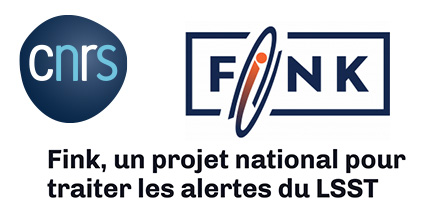
The Vera Rubin Observatory (Chile) will map the sky with the LSSTCam from 2022 for a period of ten years. This spatial and temporal mapping of the sky, the Legacy Survey of Space and Time (LSST), will record millions of alerts every night related to various transient astrophysical phenomena: supernovae, gamma-ray bursts, gravitational microlenses, gravitational wave astronomy, objects of the solar system.
Julien Peloton (Engineering Pole, Ingineering Department, Development Department) coordinates the activity of IJCLab researchers and engineers around the Fink project to process the large amounts of data collected during this campaign. The project began in 2019 in the laboratory thanks to R&D work in IT on the processing of big data, and today it is a transversal effort that brings together the Operations & Development departments of the IT Department as well as the GREEN & gravitational waves teams of the A2C Pole.
A prototype of the system is hosted in the @VirtualData cloud of the University of Paris-Saclay. Thanks to this cloud, the IJCLab teams were able to effectively evaluate big data and machine learning techniques, to design tailor-made systems adapted to the analysis of the LSST alert flow. While this prototype will remain online for the duration of the data taking, a production platform will be hosted at the CC-IN2P3 Computing Center.
Fink teams are also collaborating with other projects (SVOM mission and GRANDMA telescope network) to better study gamma-ray bursts, kilonovae and gravitational wave sources. They have also put in place tools to integrate new communities interested in Rubin Observatory alerts. It now remains to convince the collaboration working on the Rubin Observatory that Fink is best suited for handling alerts.
The link to the presentation of Fink on YouTube.























